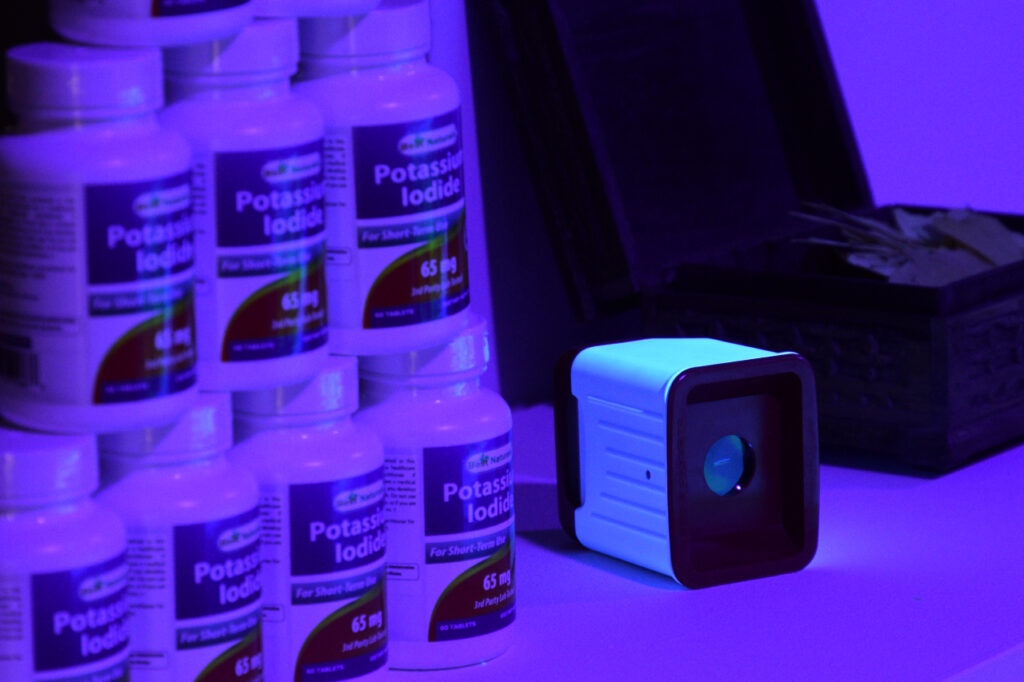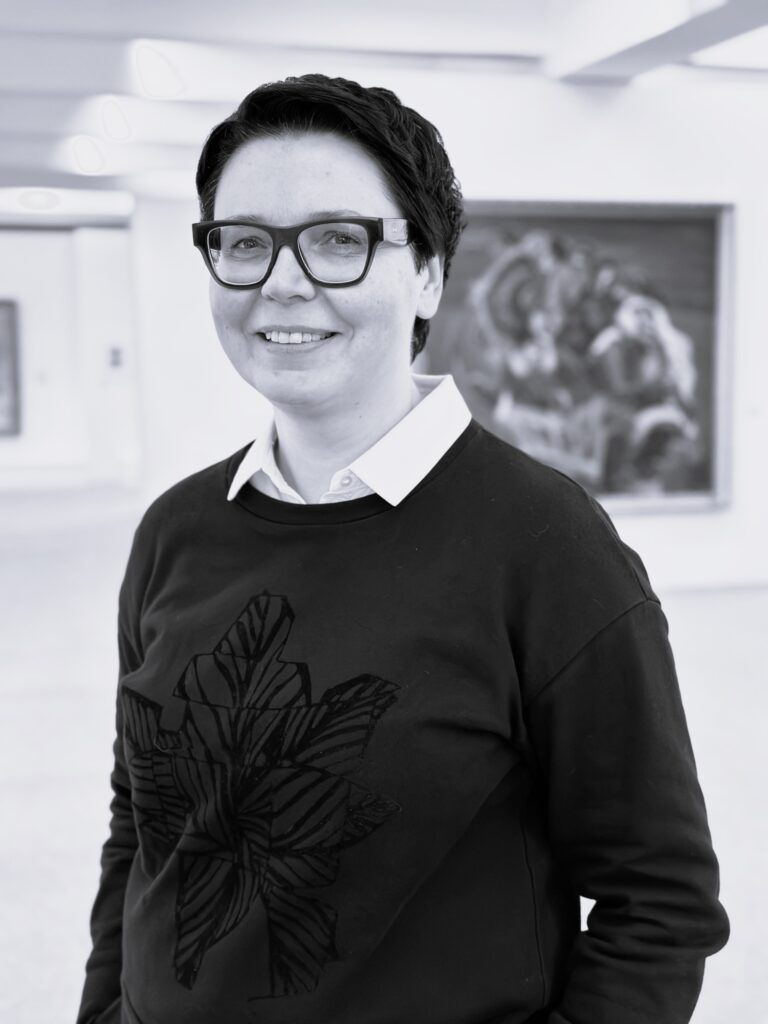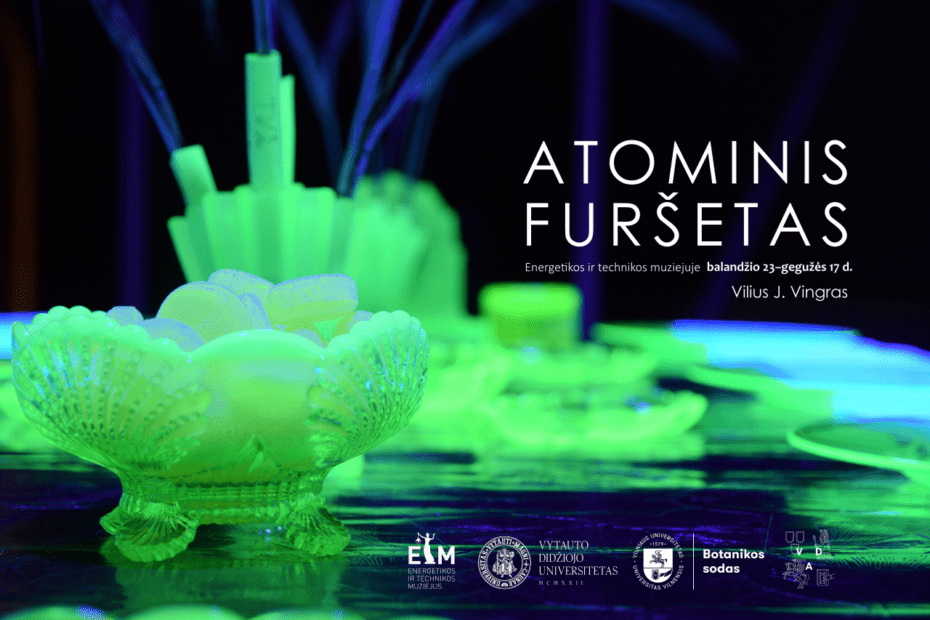How would a person behave if they knew they were drinking or eating from radioactive dishes? This is the question posed by Vilius Juozapas Vingras, author of the installation “Atomic Buffet”.
For the third year Energy and Technology Museum is participating in the international project “NuSPACES. Nuclear Spaces: Communities, Materialities and Locations of Nuclear Cultural Heritage”.
This year will be the first time that an international delegation from Sweden and the United Kingdom will visit Lithuania. On 25th of April, a public presentation of the project will take place at the Energy and Technology Museum, followed by a public discussion on “The Legacy of the Nuclear Industry as Cultural Heritage”.


“Mother of Chernobyl”
From 23th of April to 17th of May, the museum’s Steam Condenser Hall will host the installation “Atomic Buffet” by Vilius J. Vingras. The artist will invite visitors to drink tea from the Hiroshima ginkgo tree’s offspring and to enjoy a bite to eat from radioactive dishes. The events will take place On:
◾ April 23rd, at 5.30 PM (performance, meeting with the artist)
◾ April 25th, at 5 PM (discussion)
◾ May 3rd, at 5.30 PM (performance, meeting with the artist)
Tickets are available here. The discussion is free of museum admission charge.
ABOUT THE “ATOMIC BUFFET”
The installation consists of digital and analogue photographs and objects – uranium glass plates, cups, candlesticks, a candy dish and a lead tablecloth decorated with handmade ginkgo leaf stamps. The objects, relics of the Soviet era, encouraged Vilius J. Vingras to explore atomic energy and radiation not only from a scientific but also from an aesthetic point of view.


Installation “Atomic Buffet”
“Atomic Buffet” installation is presented by the artist himself in a performative way: he offers the audience to drink tea made from uranium vessels, that are made from the leaves of the Hiroshima ginkgo tree’s progeny. Vingras tells the history of nuclear energy, the effects of radiation on humans and the environment, safety, and the legacy it leaves today.
„The “Atomic Buffet” is also an experiment with the audience. I’ll invite visitors to join me in eating from my personal collection of uranium dishes. I will try to answer the question I have asked myself: how would a person behave if they knew they were eating from radioactive dishes? With this work, I am trying to analyse people’s behaviour towards radiation and nuclear energy, their fear or lack of it,” he said.
About the artist
Vilius Juozapas Vingras studied graphic arts at the Vilnius Academy of Arts. At first he experimented with printmaking techniques, later his works became interdisciplinary. It was this interdisciplinary expression that led to the realisation of the long-gestating project “Atomic Buffet”. Currently, Vilius J. Vingras is continuing his studies at the Vilnius Academy of Arts, Department of Photography and Media Art.
“THE LEGACY OF THE NUCLEAR INDUSTRY AS CULTURAL HERITAGE”
“NuSPACES” invites you to a public discussion on 25th of April at 5 PM at the Energy and Technology Museum.
Nuclear cultural heritage is a new field of industrial heritage. The need to look at the legacy of the nuclear industry as a culturally significant object arises in many parts of the world, as nuclear power plants are being closed down and the challenges this poses – the impact on the environment, on local populations and on regional development, and the long-term protection of radioactive waste – are being addressed.


The nuclear industry, as a technological and cultural phenomenon, has shaped the 20th century, and preserving its material and immaterial legacy is an important challenge.
The discussion will focus on Lithuania’s main nuclear facility, the Ignalina Nuclear Power Plant, asking how a cultural heritage perspective can be useful in transmitting information about this politically and physically complex legacy to future generations.
What should be preserved and how, whose voices should be heard, what should not be lost in the decommissioning of nuclear facilities? The discussion will address the question of what constitutes nuclear cultural heritage in general and how it can benefit different groups of society.
The discussion will be moderated by prof. Marija Drėmaitė (Vilnius University)
Participants:
◾ Mykolas Bistrickas (Head of the Energy and Technology Museum)
◾ Erlandas Galaguz (Mayor of Visaginas Municipality)
◾ Valdas Ledzinskas (Head of the Operational Planning Division of Ignalina NPP)
◾ Robertas Motuzas (Director of the Department of Cultural Heritage)
◾ Dr. Eglė Rindzevičiūtė (Scientist, Kingston University, London)
Organiser – doc. Linara Dovydaitytė (Scientist, Vytautas Magnus University).


Doc. Linara Dovydaitytė
ABOUT THE PROJECT
The discussion is one of the final events of the international “NuSPACES” project. Between 2021 and 2024, researchers, in collaboration with the nuclear industry and the cultural heritage field, have documented the processes of building nuclear cultural heritage in three countries – the UK, Lithuania and Sweden – to shape a new agenda for research and practice in this field.
During the project participants’ stay in Lithuania, visits to Lithuanian energy sites and a public discussion, will take place. The Museum will host a thematic installation “Atomic Buffet” by Vilius J. Vingras.
The installation will be on display until May 17th in the Steam Condenser Hall.
More information here.
Partners:
Vytautas Magnus University, Vilnius Academy of Arts, Botanical Garden of Vilnius University.

